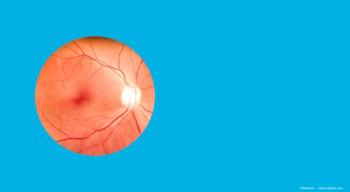
Ultrasound biomicroscopy, anterior segment-optical coherence tomography useful adjuncts
Gonioscopy remains the gold standard technique for assessing the anterior chamber angle, but ultrasound biomicroscopy and anterior segment optical coherence tomography can be useful adjuncts for glaucoma patient care.
Key Points
San Francisco-Gonioscopy remains the gold standard technique for assessing the anterior chamber angle, but ultrasound biomicroscopy (UBM) and anterior segment optical coherence tomography (AS-OCT) can be useful adjuncts for glaucoma patient care, said Sunita Radhakrishnan, MD, at Glaucoma Symposium 2012.
"In contrast, AS-OCT and UBM are objective imaging techniques providing quantitative analysis and unique structural information that can be important for guiding individual patient management," she said.
Of the two techniques, UBM uniquely allows imaging behind the iris, and therefore it can be used to visualize the ciliary body, the ciliary processes, and the zonules. It is also valuable for identifying cystic or solid iridociliary lesions, determining IOL position in uveitis-glaucoma-hyphema syndrome, and for evaluating hypotony, Dr. Radhakrishnan said.
However, conventional UBM is cumbersome to use and uncomfortable for the patient because it requires supine positioning and an immersion water bath. In addition, the procedure is time consuming, requires a highly skilled operator, and provides only a small-field scan.
"Some newer UBM devices have an increased scan width, and the imaging can be performed with the patient upright," she said. "However, in my experience, traditional UBM has the best image quality."
Advantages of AS-OCT
AS-OCT cannot be used to image the posterior chamber or ciliary body because it does not penetrate behind the iris. However, it has several advantages compared with UBM. It is a non-contact procedure that can be performed by a technician after minimal training.
In addition, AS-OCT has much higher resolution than traditional UBM (~15 versus 40 μm), it provides a view of the entire anterior chamber in a single scan, and because it uses infrared wavelength of light, scan acquisition can be done in the dark.
"The opportunity to eliminate the effect of illumination is a big advantage when assessing the angle," Dr. Radhakrishnan said.
In addition, because serial AS-OCT scans can be approximately aligned to the same location based on anatomic landmarks visible on the video image, it is better suited than UBM for monitoring changes in angle status. AS-OCT also can be extremely useful as a patient education tool, she noted.
"Most patients with occludable angles are asymptomatic and are surprised that a laser procedure is being recommended to them," Dr. Radhakrishnan said. "It is very helpful to show them the appearance of their angle in an OCT image so they can see how it compares with an open angle, and this also helps me to explain how an iridotomy works."
Population screening role?
Due to its ease and speed, AS-OCT has also been considered as an attractive method to use in population screening to identify eyes at risk for an acute angle closure attack. Unfortunately, in studies performed to date, its sensitivity and specificity are not yet good enough to recommend AS-OCT for widespread use, she said.
"The studies investigating the potential of AS-OCT as a population screening tool have all used gonioscopy as the comparator, and perhaps gonioscopy is a flawed standard," Dr. Radhakrishnan said. "Ongoing investigations are focusing on whether use of AS-OCT to identify dynamic factors, such as changes in iris volume during physiological mydriasis, or using a combination of quantitative AS-OCT parameters might be a better way to identify at-risk patients."
Currently, one dedicated AS-OCT device is commercially available in the United States (Visante, Carl Zeiss Meditec). Some newer Fourier-domain OCT devices sold domestically have anterior segment scanning capability. However, Dr. Radhakrishnan said she typically does not use the latter instruments, which were initially developed for posterior segment applications; they use a 830-nm wavelength (versus 1,310-nm for dedicated AS-OCT), and so have limited penetration depth.
Glaucoma Symposium 2012 was part of Glaucoma 360°, presented by the Glaucoma Research Foundation in association with the Glaucoma Research and Education Group and Ophthalmology Times.
FYI
Sunita Radhakrishnan, MDE-mail:
Dr. Radhakrishnan has no relevant financial interests to disclose.
Newsletter
Don’t miss out—get Ophthalmology Times updates on the latest clinical advancements and expert interviews, straight to your inbox.



















































.png)


